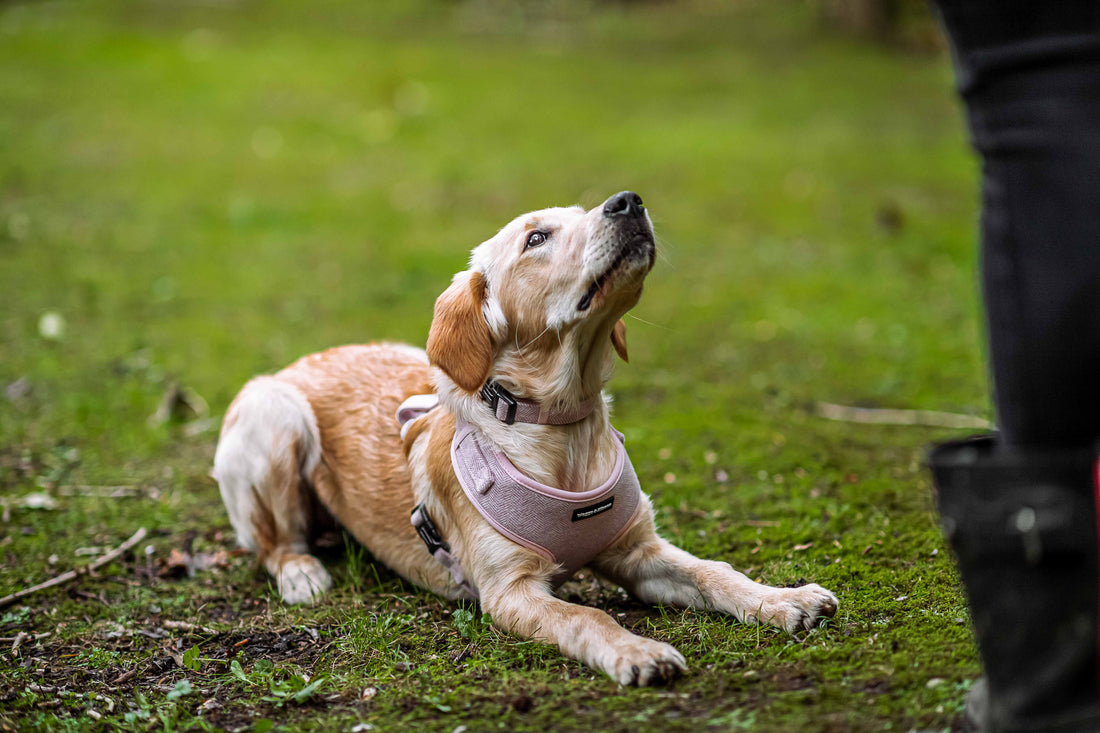
Incorporating Recall and Heel Commands Into Your Walk
There’s nothing quite like the exhilaration of watching your dog bound through a field, tail aloft, free to explore.
Yet every dog-parent knows that freedom comes with responsibility. Strong recall and a reliable heel command turn a good walk into a great one—keeping your pup safe, happy and under control.
Here’s how to weave these essential cues into your daily outings without spoiling the fun.
Why Recall and Heel Matter
- Safety First: A solid recall saves lives when cars, livestock or sudden hazards appear.
- Smooth Strolls: Heel ensures your dog walks beside you rather than racing ahead, tangling your lead or brushing past passers-by.
- Mental Stimulation: Learning and practising commands engages your dog’s brain—tiring them out in a different, very canine way.
- Strengthening Your Bond: Clear communication builds trust. When your dog knows you lead walks that are fair (and full of rewards), they’ll happily check in with you.
Step 1: Perfecting Recall on Neutral Ground
1. Choose a Quiet Space: Start indoors or in a fenced garden, free from distractions.
2. High-Value Rewards: Use small, smelly treats or a favourite toy—something your dog truly adores.
3. One-Word Cue: Pick “Come” or “Here.” Say it cheerfully, crouch down and clap your hands. When your dog arrives, mark the moment with a “Yes!” or click, then reward immediately.
4. Repeat & Fade Lure: Initially, you may need to pat your legs or gently tug on the lead. As your dog learns, reduce the lure until just the verbal cue and your open arms are enough.
5. Increase Distance Gradually: Walk a few paces away, call them back, reward lavishly. Build up to longer recalls, indoors and in the garden, before moving outdoors.
Step 2: Introducing Heel on Short Sessions
1. Define Heel Position: Decide which side—left or right—your dog will walk on and stay consistent.
2. Lure into Place: Hold a treat at your side, against your leg, so your dog naturally nudges into the heel position. Use your chosen cue, such as “Heel” or “With me.”
3. Take a Step, Reward: As soon as your dog keeps pace in the correct spot for one step, mark and reward.
4. Build Steps and Time: Gradually ask for two or three steps before treating, then five, then ten. Always maintain a cheerful tone and short bursts; five minutes of heel training is far more effective than half an hour of frustration.
5. Add Turns and Stops: Introduce left and right turns, “Stop,” and “Go” to weave the heel command into real-world walking. Reward consistency and calmness.
Step 3: Combining Recall and Heel in Your Walk
1. Warm-Up Session: Begin in a quiet area—practise a couple of recall and heel repetitions off-lead if safe. This primes your dog’s brain for learning.
2. Short Off-Lead Stints: In a secure field or fenced park, call your dog to “Come.” Once they reach you, transition straight into “Heel” as you set off together. This links the two behaviours in your dog’s mind.
3. Alternating Rewards: Praise or treat for a crisp recall, then again for walking nicely at heel. Alternating food and praise keeps your pup attentive rather than fixated on treats alone.
4. Introduce Distractions Gradually: Start with light distractions—distant joggers or birds—and practise recall and heel when your dog is mildly interested. Step back to basics if they lose focus, then build back up.
5. End on a High: Finish each walk with a fun recall game—maybe a quick dash after a ball—so your dog associates practicing commands with the joy of freedom.
Troubleshooting Tips
- Dog Won’t Come: Reduce distractions, shorten distance, and use a stronger reward. Never scold upon arrival; you want “come” to stay positive.
- Pulling at Heel: Step to a halt the moment slack disappears. Wait for your dog to step back beside you before moving on. Consistency is key.
- Overheating or Tiring: Keep sessions brief, especially in warm weather. Use shaded routes and carry water for both of you.
Final Thoughts
Teaching recall and heel doesn’t have to turn your walks into formal training drills.
By sprinkling in a few repetitions, using high-value rewards and keeping sessions short and sweet, you’ll soon have a dog who listens as happily as they explores.
With practice, those boundless field-runs and bustling pavement strolls become moments of teamwork, trust and true canine joy—leash and lead dancing in perfect harmony.
